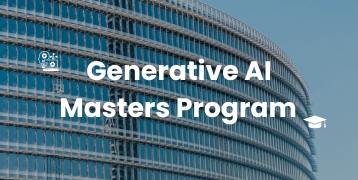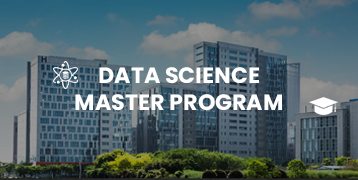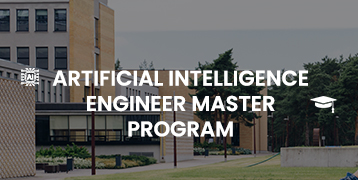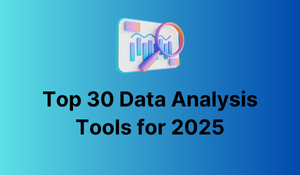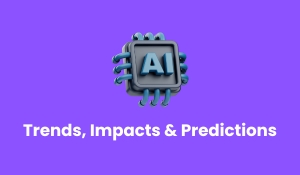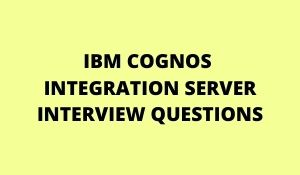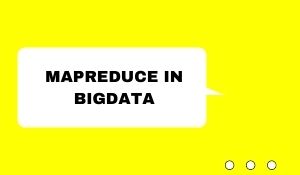
Big Data can be determined as a big dataset or group of such huge datasets that can not be processed by customary systems. Big Data has enhanced an entire subject in itself which consists of a study of different tools, techniques, and frameworks rather than just data. MapReduce is a framework that is used for making applications that support us with processing a huge capacity of data on a wide range of commodity hardware.
What is Big Data?
Big Data is a collection of huge datasets that cannot be processed by using conventional computing techniques. E.g, the volume of data Facebook or Youtube requires it to accumulate and lead on a per diem basis, can fall under the category of Big Data. Although Big Data is not only about scale and volume, it also entails one or more of the following factors Velocity, Variety, Volume, and Complexity.
Benefits of Big Data
- Make use of the data kept in social networks like Facebook, the marketing agencies are learning about the response for their campaigns, ennoblement, and other advertising mediums.
- Using the details in social media like preferences and product perception of their consumers, product companies and retail organizations are planning their production.
- Utilizing the data regarding the previous medical history of patients, hospitals are providing better and quicker service.

What is MapReduce?
MapReduce is a processing method and a program version for distributed computing based on Java. The MapReduce algorithm consists of two key tasks, that is Map and Reduce. The map takes a set of data and converts it into another set of data, where discrete factors are broken down into tuples, key, or value pairs. Secondly, reduce the task, which takes the output from a map as an input and combines these statistics tuples into a smaller set of tuples. As the sequence of the name MapReduce implies, the lower task is constantly carried out after the map job. The fundamental benefit of MapReduce is that it is simpler to scale data processing over multiple computing nodes. Under the MapReduce model, the data processing primitives are known as mappers and reducers. Decomposing a data processing application into mappers and reducers is often nontrivial. But, instantly as we write.
Related Courses
| Course Name | Enroll Now |
|---|---|
| Big Data Architect Masters Program | Enroll Now |
| BIG DATA SPLUNK TRAINING | Enroll Now |
| Informatica Big Data Integration Online Training | Enroll Now |
| BIG DATA HADOOP TRAINING | Enroll Now |
| Talend Big Data Training | Enroll Now |
Why MapReduce?
Conventional systems tend to use a centralized server for storing and retrieving data. Such a large number of data cannot be accommodated by common database servers. Moreover, centralized systems create too much of a bottleneck while processing multiple files simultaneously. Google, surfaced with MapReduce to solve such bottleneck issues. MapReduce will divide the task into small parts and operate each part independently by assigning them to specific systems. After all the components are processed and analyzed, the output of each computer is accumulated in one single location and then an output dataset is developed for the given problem.
Utilization of MapReduce
- It can be used in a variety of applications like document clustering, distributed sorting, and web link-graph reversal.
- It can be used for distributed pattern-based searching.
- We can additionally use MapReduce in machine learning.
- It was used by Google to regenerate Google’s index of the World Wide Web.
- It can be used in multiple computing environments such as multi-cluster, multicore, and mobile environments.

Leveraging MapReduce to Solve Big Data Problems:
The MapReduce programming prototype can be used with any complex issue that can be solved through parallelization. A social media site could use it to govern how many new sign-ups it received over the past month from different countries, to measure its increasing popularity among different geographies. A trading firm could perform its batch reconciliations faster and also ascertain which scenarios often cause trades to break. Search engines could determine page views, and marketers could perform bias analysis using MapReduce.
Advantages of MapReduce
The two biggest advantages of MapReduce are:
- Parallel Processing:
In MapReduce, we are dividing the job amongst multiple nodes and every node works with a part of the job simultaneously. So, MapReduce is primarily based on the Divide and Conquer prototype which helps us to exercise the data using specific machines. As the data is processed by multiple machines rather than a single machine in parallel, the time taken to process the data will be reduced by an outstanding amount.
- Data Locality:
Instead of moving data to the processing unit, we are operating the processing unit to the data in the MapReduce Framework. In the conventional system, we used to bring data to the processing unit and process it. But, as the data grew and became very vast, bringing this huge amount of data to the processing unit created the following issues:
- Moving huge data to processing is costly and degenerates the network performance.
- Processing takes time as the data is processed by a single unit which becomes the bottleneck.
- The master node can get exhausted and may fail.
Now, MapReduce allows us to get the better of the above issues by bringing the processing unit to the data. This allows us to have the following advantages:
- It is very cost-effective to move the processing unit to the data.
- The processing time is reduced as all the nodes are working with their part of the data in parallel.
- Every node gets a part of the data to process and therefore, there is no chance of a node getting overloaded.
Summary
Before learning MapReduce, you must have a basic knowledge of Big Data. The reason why it is esteemed so much is its capability of parallelism and getting the output based on key-value pair analysis. It is competent at doing big wonders when it comes to Big Data. When it comes to real-world problems, MapReduce does make it a great option for easy processing of any volume of data. If Big Data is what you are looking advanced to, MapReduce should be the first thing that comes to your mind. The Gologica MapReduce Online Training is designed to help beginners and professionals.
👉 Related Articles:
🎯 What is Big Data Analytics? A Complete Guide to Big Data Analytics
🎯 Big Data in Internet Of Things
🎯 Big Data vs Data Science vs Data Analytics
🎯 BIG DATA TALEND Interview Questions and Answers
🎯 Big Data Mapreduce Interview Questions and Answers
🎯 Big Data&Hadoop Interview Questions and Answers

